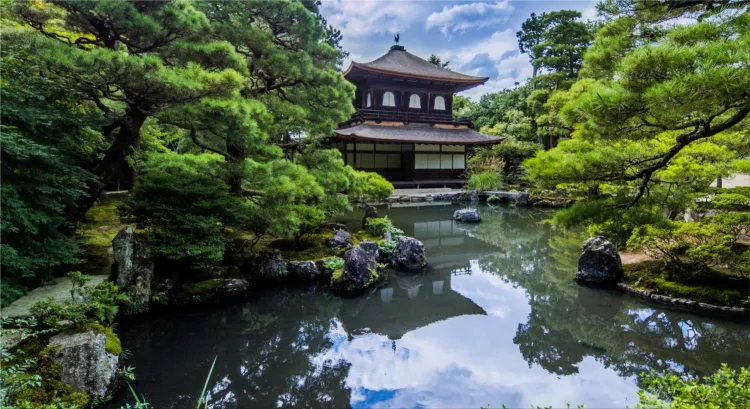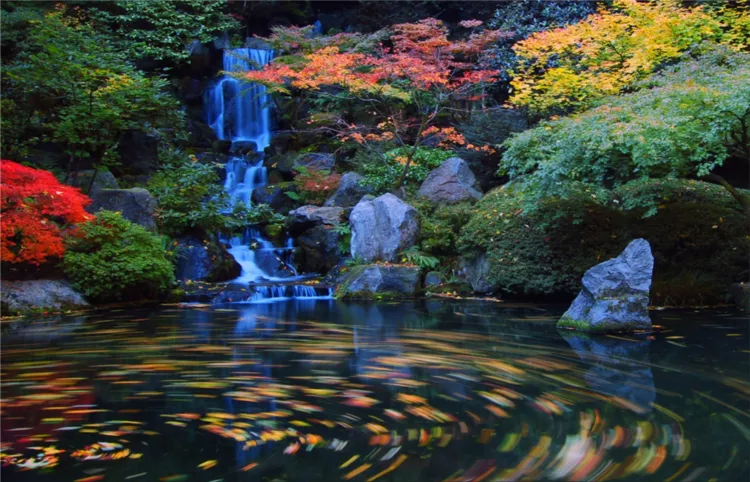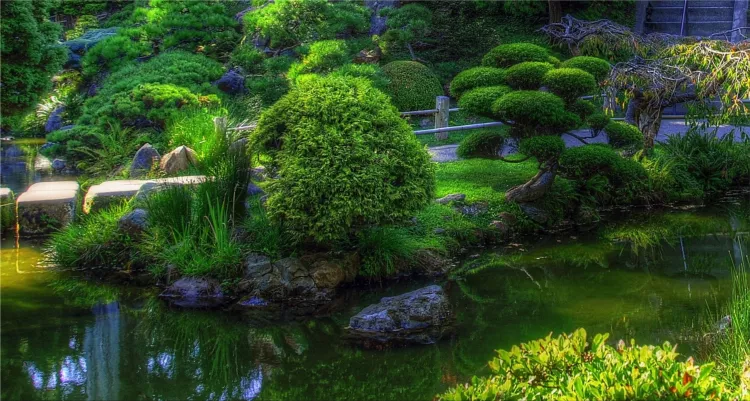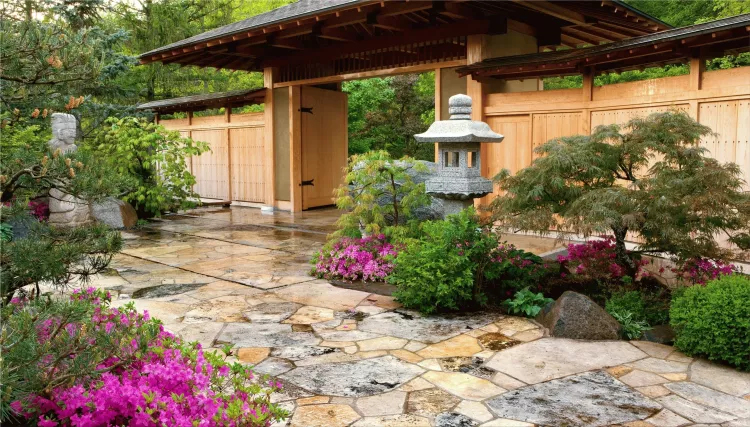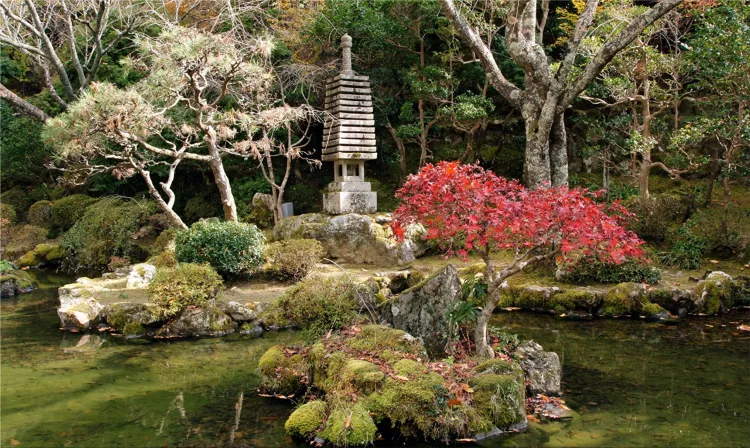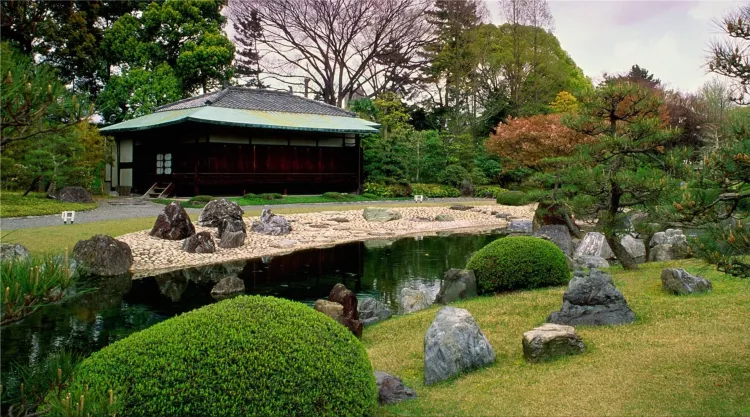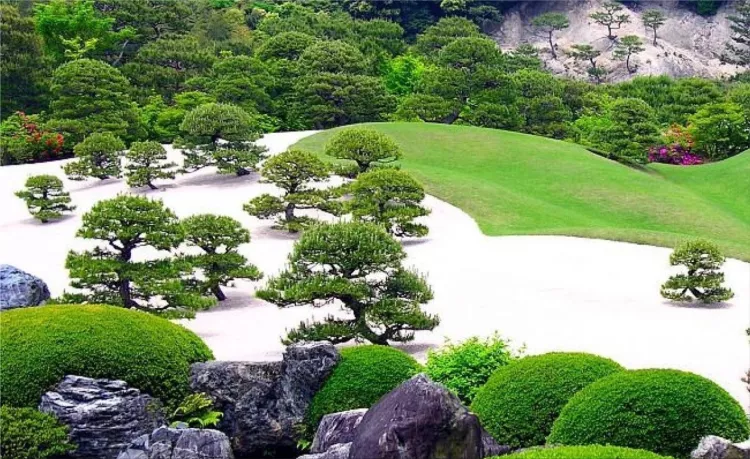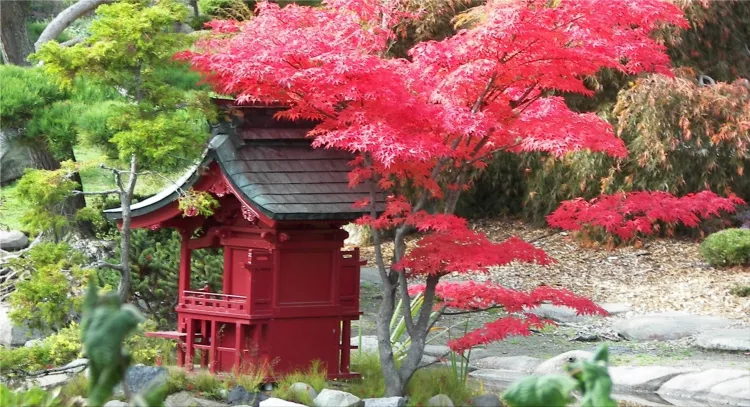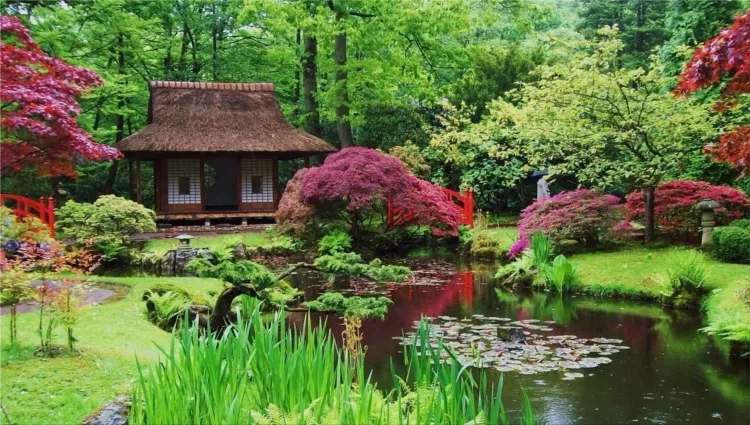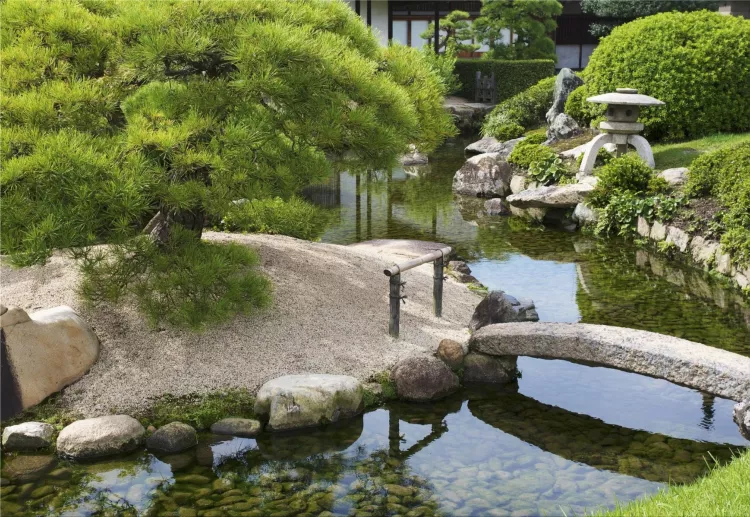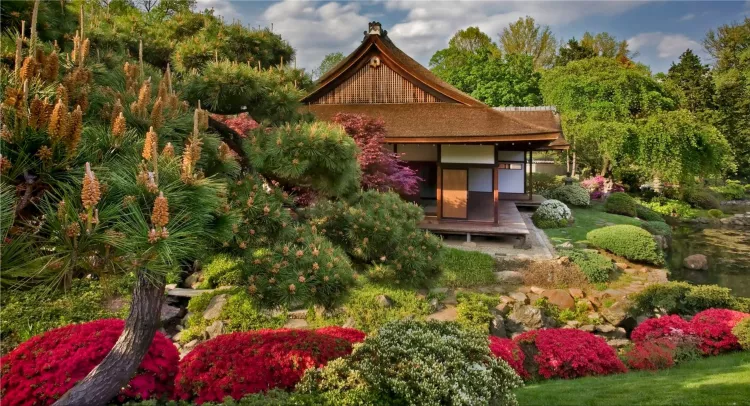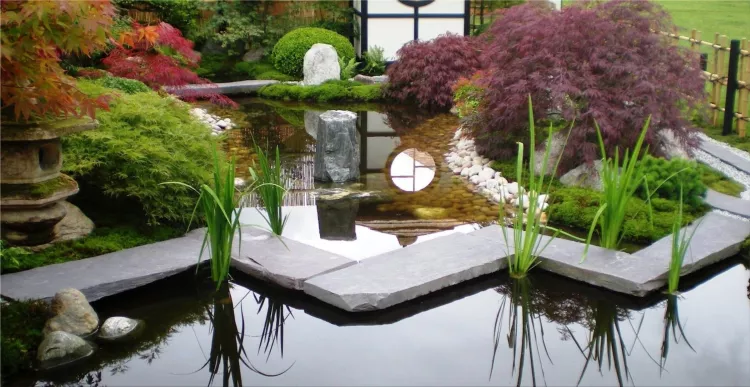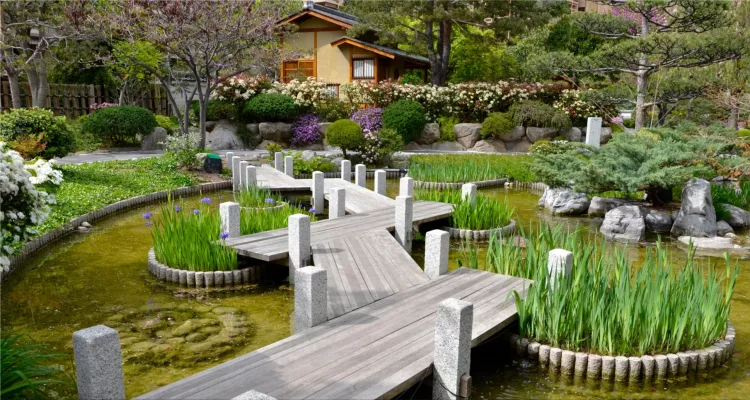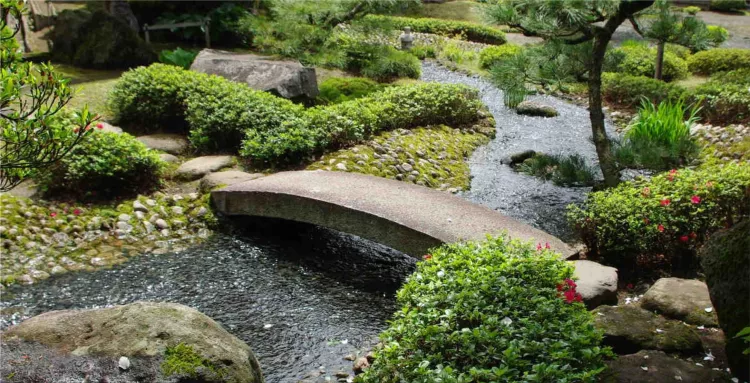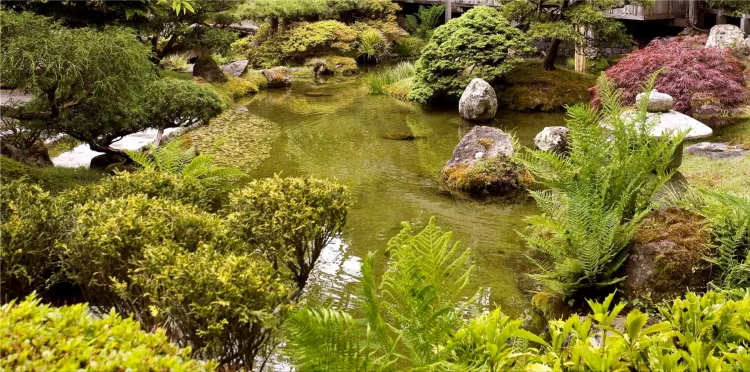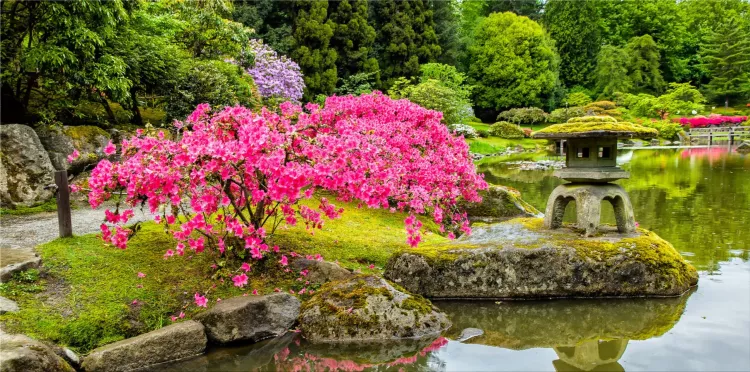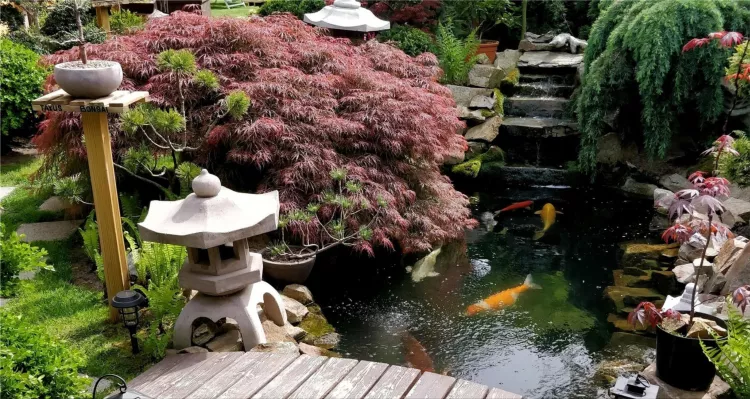Tips and ideas for landscaping in a Japanese garden
In today's fast-paced world, an increasing number of people want a more personal spot to rest in their garden. The Japanese garden (ZEN garden) has been, and always will be, an ideal choice since it has a relaxing impact and can be applied even in a small space. Green plants, stones, tiny sections of pebbles, and water holes characterize this garden design.
A true oasis of relaxation is formed when all of this is integrated perfectly. Also, if you want to transform your backyard into a miniature Japanese garden, you've come to the ideal location. This post will provide you with some crucial suggestions on Japanese garden design and many inspiring ideas.
Creating a Japanese garden.
Do you have a tiny garden or yard and are concerned about your ability to maintain it? The differences are, of course, many and are determined by location, climatic zone, and, of course, your tastes. But, at the same time, I'm charging you with good energy.
You are correct to develop a tiny Japanese garden if it serves as an area for rest and leisure rather than additional effort. Gardening is probably not comprehensive in this scenario, but it is far easier and faster to do than a food garden. We'll show you what aspects this Japanese design offers in the yard below.
Japanese garden design ideas.
A Japanese garden does not require a lot of room to appear beautiful. Typical features are typical of miniature gravel landscapes, green patches, mossy rocks, and specific flora.
This little Japanese garden's aesthetics benefit from a small water feature, a few Asian-style garden or stone lanterns, and a private seat. A bamboo fence that doubles as a visual screen is also advised.
Plants that would look very good in a Japanese garden.
Depending on the size of your Japanese garden, you may want to consider planting one or more trees. The tree is a crucial component of the Japanese garden and represents life. A peach or cherry tree is advised for a lovely spring blossoming.
It would be ideal if it was a Japanese cherry (Prunus serrulata), whose blossoming is something out of a fairy tale. A bonsai tree would also be an excellent choice because it is typical of the Japanese Zen garden and offers the sense of a little space that appears much larger.
In addition to trees, other plants can bring the famous Japanese aesthetic to your own garden. For example, the azaleas in the little Japanese garden will undoubtedly become an exceedingly appealing element with their blossoms colored red, orange, white, or purple. Only a tiny portion of the leaves wither after flowering, which is why they provide so many greens in the Japanese garden.
If a hedge surrounds it, it will remain green even in the winter. Cimisir and dogwood are the most cost-effective and weather-resistant plants. Peonies and embarrassments can take over following the magnificent azalea, ensuring that the Japanese garden is never colorless.
Muscles and boulders.
Boulders and stones play a vital role in this Japanese design style. You may also "dress" your small Japanese garden with green grass in addition to a pond.
You may combine stones of varying sizes to create an eye-catching overall effect. The bigger stones, strategically placed, can be beautifully matched by an average gravel surface. The Japanese garden is an honest meditation spot if the gravel landscape is mainly on that surface.
Moss can also be used in grass or lawn, which can only be partially arranged on stones. Finally, muscle symbolizes age and, implicitly, wisdom, which is essential in any Zen garden.
The Japanese garden's water.
Water is an essential component of the Japanese garden. Water enhances the Japanese garden picture, whether in the shape of a tiny garden pond or as a flowing variety (such as a mini-artesian well or a mini-waterfall).
If you pick a garden pond, you may decorate it with appropriate aquatic plants or let a few wonderfully colored Japanese carp (Koi fish) swim in it.
However, in small gardens, this is not always feasible, so consider the option of a little tap, the water from which gently pours into a ceramic pot.
In the event of a very tiny garden, you can design it without the water feature. The so-called dry course, which replicates a little river of stones or fine sand, is viable. If you choose the sandy version, the route can be wavy to resemble the flow of actual running water.
You can only accomplish a similar look with stones if you arrange them in a specific arrangement.
If you are captivated by Japanese Zen gardens and decide to start arranging one, we can only wish you the best of luck.
Regardless of the parts of the Japanese garden you choose and combine, we are confident that you will be incredibly delighted with the way you will rest in the heart of it, amassing those good positive energies radiating from all corners of the Japanese garden.
- Add new comment
- 581 views





